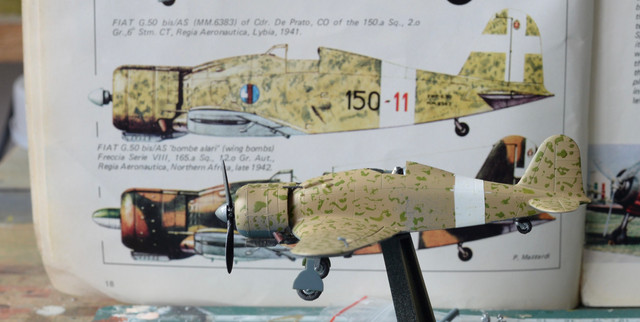HOME | DD
 Scutigera — Turbellarian microscopy 1
Scutigera — Turbellarian microscopy 1

Published: 2010-06-19 00:34:31 +0000 UTC; Views: 2044; Favourites: 17; Downloads: 92
Redirect to original
Description
Closer.Closer!
CLOSER!!
This series of photographs depict a tiny turbellarian flatworm (about 1 millimeter long) viewed under a microscope at increasingly higher magnification. The magnifications, if I recall correctly, are 40x, 100x, and 200x, respectively. I might have moved to an even higher magnification, but at 20x, the flatworm was moving so fast that it was very challenging to take a picture where no part of its head was outside the frame.
I do not know what all of the turbellarian's visible internal structures are. The round green blobs might possibly be symbiotic algae. The dark circles within clear circles might be nuclei within cells. The uncluttered patch in the middle of the planarian's body is probably the musculature of its pharynx. The red-black dots on its anterior end are, without a doubt, its eyespots.
I love flatworms, especially since I keep a thriving colony of planaria as pets. I don't know what species of turbellarian this individual was, nor do I know whether it was full-grown. After admiring this flatworm's cuteness and stunning detail (and after taking many pictures), I returned it unharmed to the water from which I had collected it.
Related content
Comments: 11

I hope you don'tmind me asking, but...
How do you keep your Planaria? I kept the leftovers from my bio lab, but no one seems to know how to take care of them or really want to except me. 
I've been reading as much as I can online, but some of it is contradictory and I'm still kinda unsure what is best. They seem to be pretty healthy and there are quite a few new little ones. ^^ They are Brown Planaria, Dugesia tigrina.
👍: 0 ⏩: 0

can i plzzzzz use dis image for my college work????? m a student..
👍: 0 ⏩: 0

I wanna kiss its' cute little face, but its so teensy I might eat it. And thats not nearly as good as kissing it
👍: 0 ⏩: 1

No, it surely is not! This flatworm was waaaay too small to kiss, alas. But I agree that it has a cute face.
👍: 0 ⏩: 0

Looks like some kind of rhabdocoel flatwork (true planarians are triclads, but the term 'planarian' has pretty much just been used to describe any old flatworm, I guess).
It could be Dalyellia or a Mesostomum, but you'd need an expert, and even then, it might be something only possible to identify by taking serial cross sections of the reproductive organs... -_-;
In short, without a good resource, it could be any number of microturbellarians!
👍: 0 ⏩: 1

Or perhaps, in addition to possibly being a microturbellarian, it could be a juvenile of a larger species? But whatever it is, you're probably right that identifying it down to species or even genus would be a huge headache. I've seen planarian taxonomic keys before, and not only are there dozens of species that look practically identical, but much of the keying does indeed call for taking cross-sections of reproductive organs. Despite my interest in turbellaria, Dugesia dorotocephala is the only flatworm species I can identify with any degree of confidence. As far as I know, the sharply-pointed shape of D. dorotocephala's auricles is unique.
👍: 0 ⏩: 1

I have a couple of general freshwater invertebrate keys that are actually pretty good for basic common flatworms and many other invertebrates. I can try and get their names for you if you'd like.
👍: 0 ⏩: 1

I have a few freshwater invertebrate keys as well, and have flipped through the turbellarian sections in the past, hoping to ID one species I used to have among my Dugesia dorotocephala. The planarian was not quite as large as D. dorotocephala but was certainly not microscopic. It was uniformly black, and it never once divided asexually. Its head was truncated, with three shallow forward-facing lobes/curves on the flat foremost part of the head. The outermost two lobes were the auricles. It also had two eyespots. But though I have looked through every turbellaria species key I can find, I still have had no luck IDing this species. What is especially discouraging is that I have yet to see a single photo of a specimen that matches both its face shape and body color. If you can give me any leads on what this planarian could be, that would be great, but you certainly don't have to.
A pity I don't have its preserved body (its body was eaten by other planaria before I realized it was dead), so I can't slice up cross-sections of its reproductive organs...
👍: 0 ⏩: 1

I think I've found something like what you describe here once in a rather scummy drainage ditch near a gas station. It was about 1 (maybe 1.5) cm long and fairly broad with a rounded tail? The ones I found also had a series of grooves, one that extends down the center of the underside and stops where the other two meet to make a 'U' right behind the genital pore.
I use to find and draw any new flatworms I found when I was in high school. The illustrations weren't the best, but I still have them scanned and backed up on my computer and external hard drive.
👍: 0 ⏩: 0


























